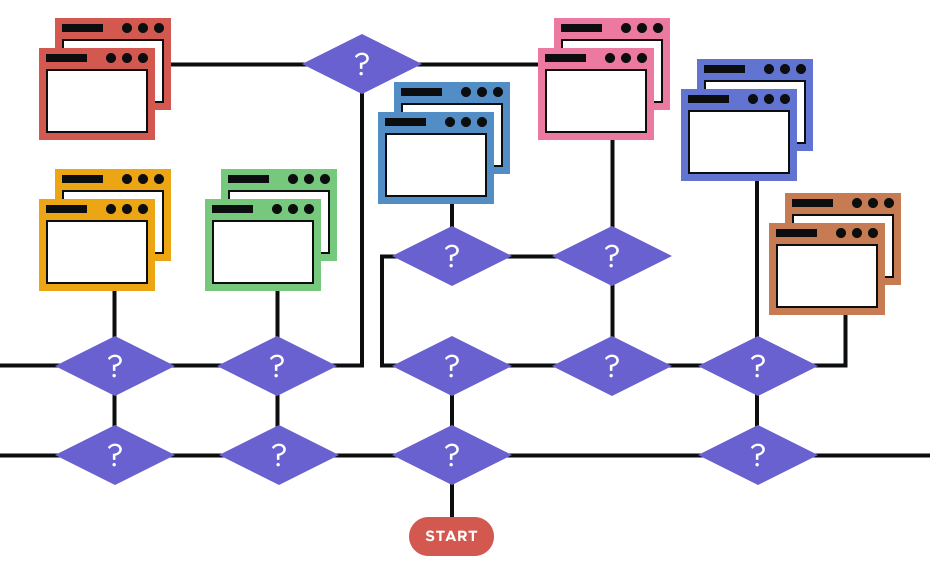If you believe the hype, data-driven decision-making is taking over businesses. As they try to speed up decisions, whether it’s adjusting supply chains or deciding which product lines to focus on, it’s clear that intuition is nothing without data-based insight.
In response, both large enterprises and midsize businesses want to take advantage of easier-to-use BI tools with self-service capabilities. But while this has accelerated the uptake of BI and analytics tools in companies of all sizes, BI buyers are learning that one size does not fit all.
The reality is, there are more than 100 BI platforms on the market (without starting to count embedded analytics capabilities in standalone apps and packages). Gartner’s 2020 review lists 151 companies, and almost 13,000 reviews. Each company has strengths. But in such a crowded market, choosing the right tool for your needs is no easy task.
To help (and without a hint of bias ;-D), bipp is pleased to offer six tips to help you choose the right BI tool.
1) Why do you want a BI platform?
Consider:
- Will you be using it for analytics on a specific business-critical application? While many vendors will offer a magical solution that offers BI on top of your preferred third party or proprietary applications, the best solution is to use a layered approach and pick a platform for that layer. With cloud-based data warehouses, analytical, and columnar databases becoming so common and powerful, it is best to invest in an ETL pipeline to bring your data to the data warehouse.
- Will users be 'going it alone,' or will they need the support of dedicated data analysts? DIY BI is common in smaller startup teams, who've historically relied on in-application analytics or aggregating in a tool like Excel or Google Sheets. Alternatively, they may be using a cloud analytic tool that promises insights that are a quick time to value. It really is a question of what people are expected to do with their data. Do they need a simple, static visualization or report? Or will they be wanting to manage new queries by themselves?
Do you have in-house data analysts to connect the database and build data models? If you want to connect cloud-based apps and run canned visualizations, then a free BI platform may be all you need. But as companies grow, their data reporting and insight needs become more complex. Not rocket science, but you may need a BI analyst who can help your teams connect the dots between data and insight.
Or, you might need an approach that lets you create visual data models without learning a new language.
bipp’s Data Modeling Layer was designed for the modern data engineers workflow with features such Git version control, transformation at the database layer and BI layers, and bipp’s powerful ad-hoc auto-SQL generator
Again, possibly a case for finding a BI platform that meets the needs of the hard-core BI analysts, the part-time analysts, pure business analysts and ultimately the end users across your organization. And if you don't have all of these needs today, you can bet that you'll have them as your company grows.
2) Do you require an on-premise, SaaS, or custom cloud deployment?
If you read the headlines, you’d assume that corporate environments are abandoning on-premise en masse and that everyone now has their heads (well, their data, apps, storage, networking, and processing maybe) in the cloud. The key is for companies to work out what data should go to the cloud, to the edge, or stay on-prem.
Issues such as securing privacy and security on an extended network, workloads and data volume combine to ensure on-premise will be around for some time. If this is how your company views the world, then obviously on-prem support is a priority in your BI tool RFP.
For those needing a custom, flexible deployment across multiple clouds such as AWS, GCP or Azure, perhaps spurred by widespread remote working, having to merge environments, and the lure of low-cost cloud providers, you’ll need a BI vendor with this capability (and not one locked into one cloud computing service).
And if you’re hedging your bets, or work in a hybrid world, then consider a vendor that can manage both deployments.
3) What level of self-service do your end users want?
The promise of self-service BI is to unlock the power of analytics to a much larger audience across an organization. It allows users to connect to the database and build reports in an intuitive manner, and support the vision of true data-driven decision-making. The idea is great in theory, and it can work really well once the data dictionaries have been vetted, cleaned up and organized by data analysts.
But you may need a tool for a dedicated technical team who can manage the ’engine room’. They’ll define the key metrics, KPIs, custom columns or dimensions, table join relationships, and so on. Also known as the data model. Once they’ve built this foundation, they can empower the non-technical business users to create their own reports and queries, drill down into row-level detail and schedule their own dashboards.
If you have business needs for agreed, consistent reports, consistent KPIs and reports, then self-service can help reduce analyst time and citizen analysts can access the data they want. It can also reduce the revisions and reduce pressure on business analysts to interpret business needs and ’translate’ for their internal clients. A third benefit is reducing pressure on IT teams in smaller organizations, who may have inherited BI roles but be ill-suited for them.
If this is your need, then your data team will benefit from a data modeling language, which allows the data team to create reusable, complex data models for their business communities(instead of rewriting the same SQL fragments again and again).
This blend of human expertise and powerful, enterprise-class technology will continue to be vital if you want a larger audience to pull ad hoc reports in support of their OKRs, understand taxonomies or monitor goals against targets.
So look for a BI tool that also prioritizes bringing fast, accurate insights to end users. Consider features like interactive dashboards and other visualizations that enable users to absorb information and identify patterns so they can make quick, evidence-based decisions.
4) How will it help your team collaborate?
The right tool needs to support how your team works together — both the business users, analysts and wider data community. Based on bipp’s own research of more than 200 data analysts, one-in-five data analysts report that collaboration limitations and lack of real-time data are major challenges of their business intelligence platforms.
To support collaboration, the BI tool should help you share reports, dashboards, and datasets very easily. Many simple tools stop at that. Premium tools are rich in collaboration features. They allow fine-grained permissions, groups, and roles. They help organize and group the content such as dashboards, ad-hoc reports, and datasets based on your internal team structure. They also provide more powerful sharing options with custom roles and permissions. Another feature that’s really useful is report or dashboard scheduling, which allows you to set up automatic report delivery via email.
On the data analyst side, modern collaboration is just not complete without Git-based version control, which goes beyond just letting analysts share their work in the background. It merges knowledge from various team members and saves a snapshot history of all the changes, which helps with tracking changes. In-database analytics is another feature to look for, since it allows analysts to process data within the database so everyone in the organization makes decisions based on the same data.
5) How much does it really cost? And will you be there when I need help?
We cheated a little here as these are really two questions. But you really can’t look at price, without considering the potential hidden costs of your brand new BI platform. In particular, how will your vendor help you get the most out of a tool that really should change your business?
According to BI-Survey.com, price-performance ratio is a BI buyers second most important criteria when selecting their BI software. And this is only becoming more important as BI platforms evolve from tools used by experts in dark rooms to sitting on the desktops of users across a business.
Consider:
- Do they offer a free test drive with full enterprise features? Or is it a gimmicky free trial that requires you to pay a minimum of $10,000 — $20,000 a year to keep using it?
- How will they support your set-up and user onboarding?
- Is there someone on-call if you or your users get stuck?
- Do they have documentation designed for a range of use cases?
- Is your vendor thinking ahead and considering how the deployment scales as you add more users
- Does your preferred vendor offer a convenient per-user pricing model that simplifies budgeting based on user need? Or is it flat cost, whether the user passively receives a report or is a full time data scientist?
- Are there additional costs for data management or extra API calls?
6) Does your BI platform support real-time decision making?
Today’s enterprises involve more than business analysts and data analysts in the decision making process. Many forward-looking firms are re-envisioning data science in terms of decision science, which sees data analysis as a key tool for making faster, better-informed decisions throughout the organization based on real-time data.
While many users simply need weekly or monthly sales reports, or access to long-term trends based on month-over-month or year-over-year comparisons, an increasing number of organizations are wanting their BI tools to provide up-to-the minute data.
Industries such as retail, transportation and logistics, the military, and weather-dependent companies such as ski resorts need to make operational choices based on the most current data or information.
If you need real time insights, you’ll need a BI tool that executes sql queries directly against the database rather than relying on an exported cube/extract. Such a tool leverages modern databases features such as column-oriented databases. These allow for fast retrieval of columns of data because they scale using distributed clusters of low-cost hardware to increase throughput.
With BI tools increasingly being tasked to automate decision-making (as opposed to just informing it), real-time is only going to become more important.
Hopefully these questions have helped you as you look at your BI purchase. If you’d like to discuss any of these features, please let us know. And if you’d like to include bipp’s enterprise-grade BI tool in your short-list, please visit https://bipp.io/request-demo/.







